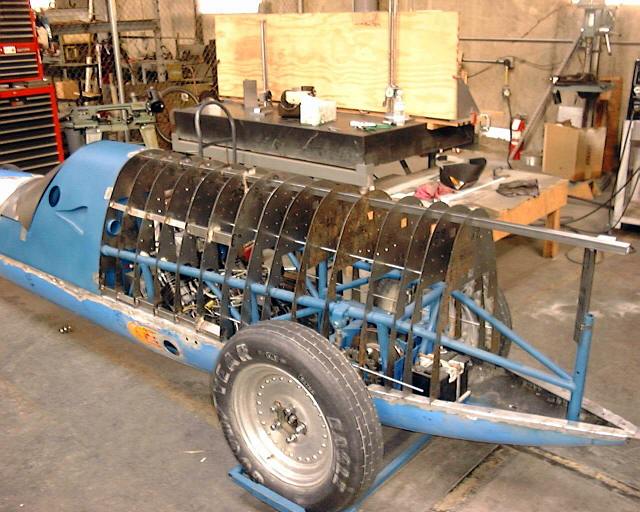
Early in the new year, my company was getting ready to move, and was throwing out all kinds of stuff. One item in particular, caught my eye. A pallet of rusty steel sheets. They didn't seem to be useful for anything. But I had a plan. We Were planing to wait to make the rear cowing, but with the limited opportunity that presented itself, priorities changed. I began to madly calculate the shape of the rear cowling on my computer, first at 5" increments, then 4" then 3", etc. Those shapes, plus attachment and aligning holes, and clearance for the frame and engine, all got programed, and a computer controlled punch, made each one. As they came out of the punch, Alan and Mark started welding, and bolting them into a strange looking framework. These ribs were used to make a part, that was used to make a part, that was used to make the part that went on the car. Sometimes you've got to think way ahead.

Here's what the car looked like with about half the ribs installed.
BTW: The car tires are siting in our "skateboards" which are casters that allow the car to move in any direction. If you don't have a set of these, stop what you're doing and build a set.
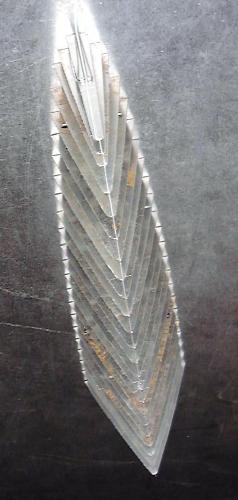
The modern sculpture above, is the last inches of the rear body. It would have been impossible to build this part with vertical ribs so they were made horizontal. You can see them mounted to the rest of the frame in the picture below.
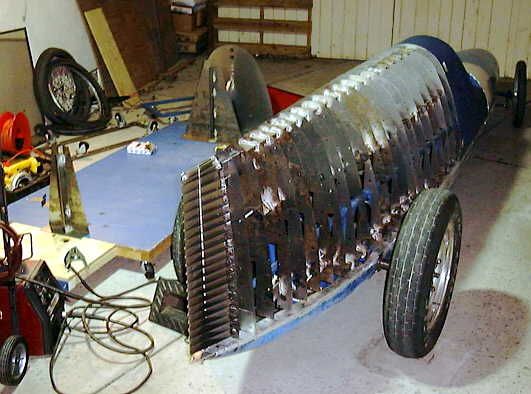
So here's what the shape of the engine cowling would be, if it were made of steel ribs. "What's the point?", you ask. The plan was to make the cowling out of fiberglass. To make that part, we needed a mold. But to make the mold, we needed a shape. What we were building was that shape, out of steel and plaster.
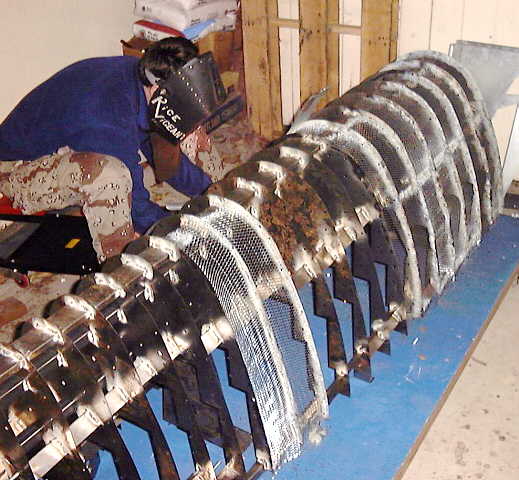
The rib structure has been transferred over to the blue cart that was next to the car above. We weren't going to tie up the car, (which still had plenty of things that needed doing.). Alan here is welding expanded metal lathe to the ribs. THe ribs were spaced at 5" to start, and they got progressively closer as the curves got tighter. We didn't want to fill the whole thing with plaster, so the lathe will keep the plaster about 1/2" to 3/4" thick.
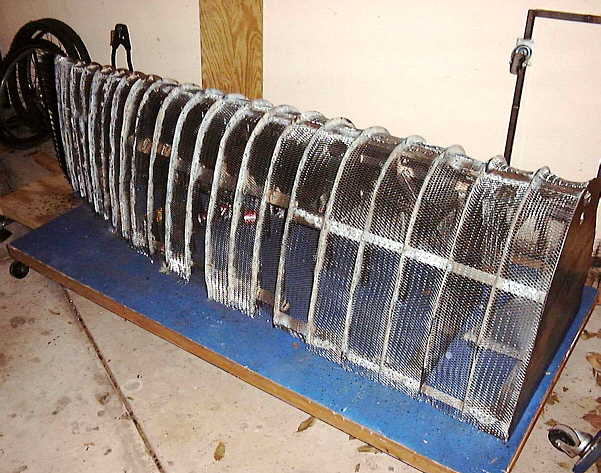
So here it is, ready to get plastered.
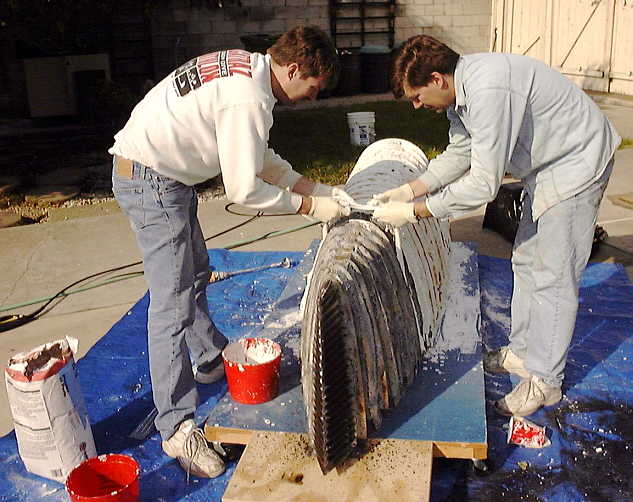
Here's the first layer of
plaster going on. It was kind of wet, and we soaked cheese cloth in it, to
give it some strength, just like a plaster arm cast. This layer was slow
and time consuming. but we didn't need to be too careful,
yet.
This is where were we were around the end of february 2001. Our first race was less than 3 months away. Here's what happened in March 2001. Or if you'd like, here's what led up to this mess, late 2000.